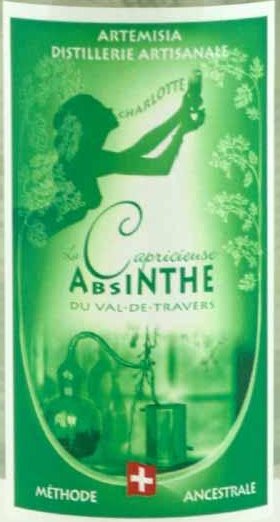Sensitive readers of The Apsinthion Protocol will probably have thought it more or less inevitable that once Moira Weir saw this picture in one of Professor Corwin’s publications
she would soon be in for a very wild ride.
There’s a certain element of controversy about tentacle sex. Most people associate it, if they associate it with anything, with Japanese animation that many people find nasty. This isn’t an entirely wrong association: there are some good reasons why tentacle sex is so prominent in anime, which go beyond the fact of an artistic tradition of which artists like Hokusai were a part. Helen McCarthy and Jonathan Clements, in The Erotic Anime Movie Guide, write as follows:
The visual grammar permitted by the tentacle is extremely useful to the pornographer. With no restriction on length, it permits penetration without blocking the view. It can be used as a form of restraint, permitting multiple penetration, sexualized bondage, and ease of camera access. Best of all for the tentacle as a pornographic device, while it may often look suspiciously like a penis, to the extent of possessing a foreskin or glans, or even ejaculating upon climax, it is not a sexual organ by definition. The Japanese film-maker can thus show as many as he likes, doing whatever he wishes, without falling foul of the usual censorship restrictions. The only problem with the tentacle is that the film-maker must find an excuse for its appearance. This is best accomplished by making monsters a feature of the storyline, be they demons, invading aliens, or creatures from the id. And since such creatures are evil by nature, it is a logical step in such porn to accentuate the incidences of rape and sexualized violence.
And that’s certainly a possibility, one that seems to fit into the conception that most people have of tentacle sex. If you’re so inclined you can go out and find whole blogs devoted to anime tentacle sex, a lot of which doesn’t look all that consensual, with names like tentaclehettaisex.com (enjoy if that’s what you’re into, disdain if that’s what you think tentacle sex necessarily is).
There are, naturally, alternatives, some of which have been explored by my blogging mentor Bacchus over at ErosBlog. A while back he posted on this image
Which suggests a very different idea of tentacle sex than the idea most people have. (More of Bacchus’s interesting blogging on the subject can be found here and here.)
Looking at these images makes one wonder (it certainly made me wonder) whether there couldn’t be tentacle seduction or, for that matter why the id of which the tentacles are supposedly the projection need necessarily be the male id. Why not the female id?
Amanda Gannon, in a post at Tor.com entitled “Sucker Love: Celebrating the Naughty Tentacle,” advances a congruent point.
There’s a particular detail in The Dream of the Fisherman’s Wife that convinces me that hers is a dream of such ecstasy. As the enormous octopus sprawls between her thighs, she has reached down and wrapped her hands tight around two of its embracing arms. She is drawing it toward her, not pushing it away. I don’t hesitate to say that gesture is familiar to me.
That passion is the same fantasy of every person who has ever dreamed of being carried off by pirates and ravished into a state of perpetual ecstasy, the same passion of the vampire’s orgasmic embrace, the werewolf’s bestial lusts, and so many more. The tentacles may be exotic, but the theme is familiar.
Think about that enough, and scenes like Moira’s encounter just sort of write themselves.

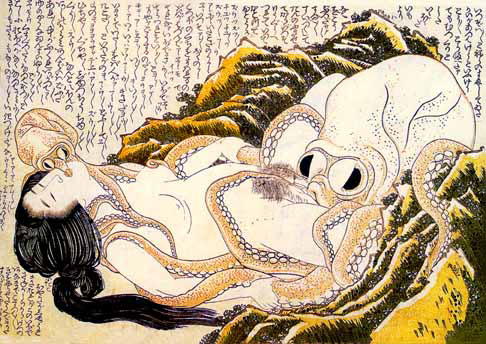

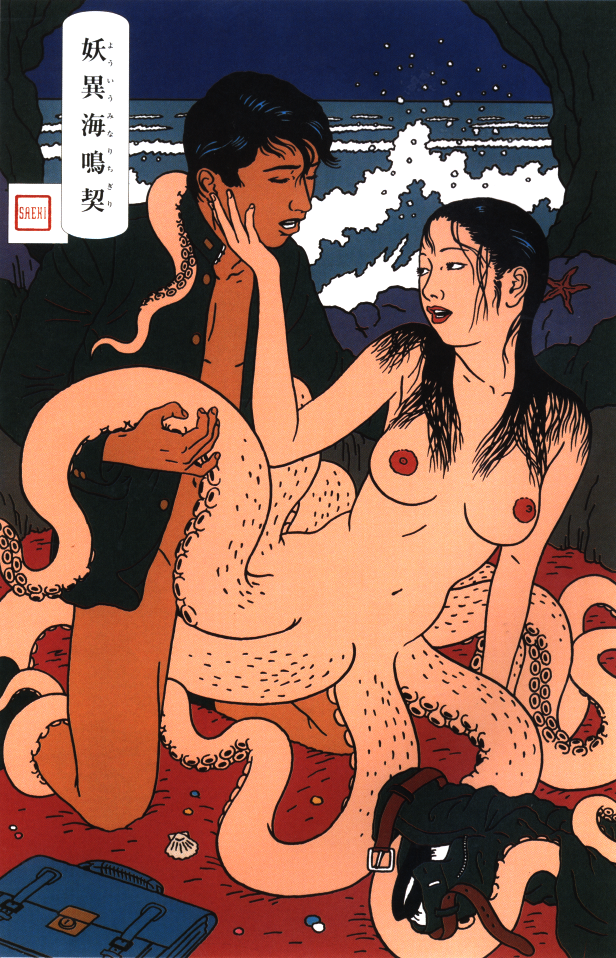
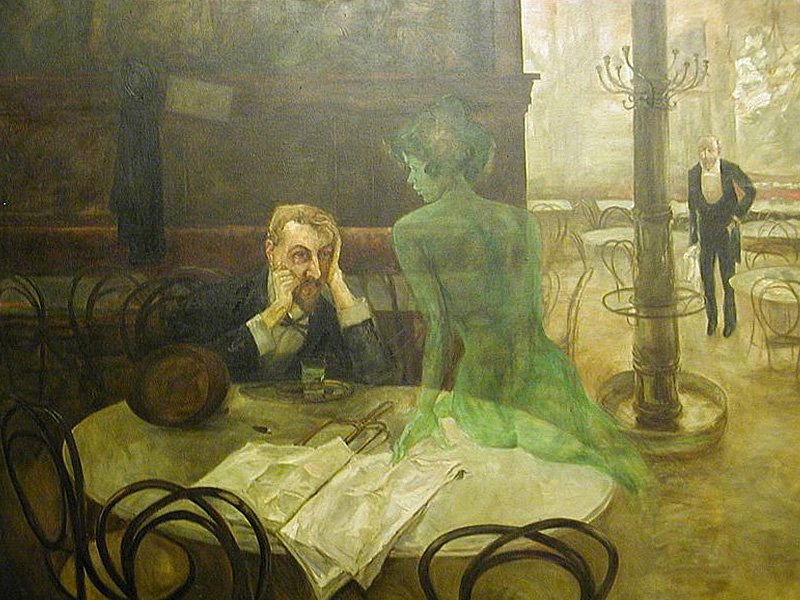
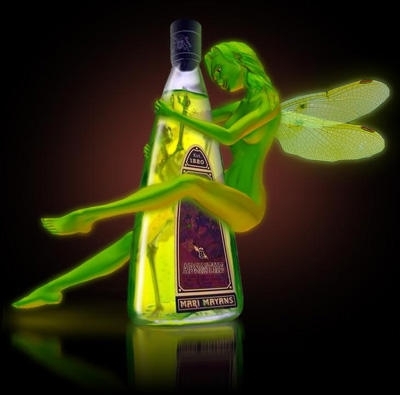
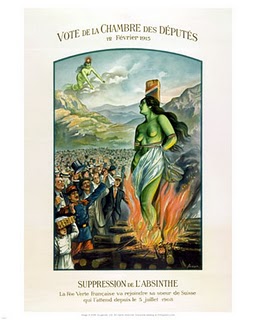 The Green Fairy was banned for a long time, even in the countries was distilled. The wormwood used to make her allegedly contained a dangerous narcotic, but more likely the ban (at least in France) was a form of industrial protectionism for French winemakers. (That’s the way it so often is, isn’t it? “For our own good” is a way of lining others’ pockets.) The ban itself at least was an occasion for some interesting art lampooning authoritarian politics, as in the example to the right, commemorating the ban in Switzerland, which followed that in France. Here the Green Fairy is burned at the stake (her French sister awaits her in heaven).
The Green Fairy was banned for a long time, even in the countries was distilled. The wormwood used to make her allegedly contained a dangerous narcotic, but more likely the ban (at least in France) was a form of industrial protectionism for French winemakers. (That’s the way it so often is, isn’t it? “For our own good” is a way of lining others’ pockets.) The ban itself at least was an occasion for some interesting art lampooning authoritarian politics, as in the example to the right, commemorating the ban in Switzerland, which followed that in France. Here the Green Fairy is burned at the stake (her French sister awaits her in heaven).